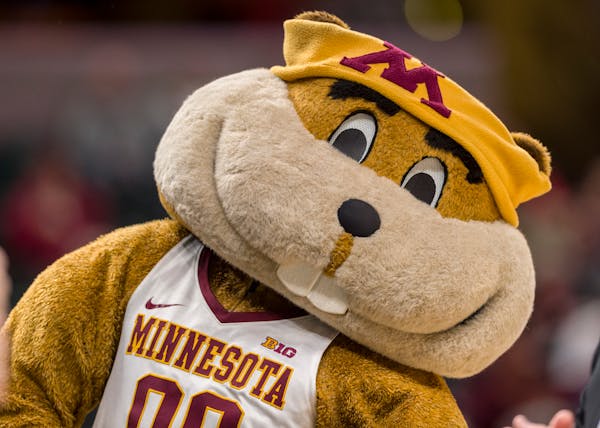Listen and subscribe to our podcast: Via Apple Podcasts | Spotify | Stitcher
Clyde Doepner has the first two Twins bobbleheads ever made.
Doepner is the team's official curator, and these two relics have smiling faces, ball caps, Twins written in script across the jersey ... and the word "Minneapolis" written on the pedestal.
Not "Minnesota."
This historical error speaks to the time they were made: months before the Twins ever played their first game at old Met Stadium, and based on an assumption by the prototype manufacturer who sent them to then-Twins owners Calvin Griffith and his sister Thelma.
They are, of course, the Minnesota Twins. Indeed, every major league team in our market is named after the state rather than a city. So you have the Minnesota Twins, Vikings, Wild, Timberwolves, Lynx and United. Which leads to this Curious Minnesota question from Tim Speake: "Why are all Minnesota sports franchises named after the state while most of the teams around the country are named after a city?"
Speake's father, Ken, was a reporter at KARE-11 for years, and has been Tim's main source for Minnesota knowledge. "When I asked him my question over a Guinness, he didn't have an answer for me," he said.
The short answer: the Twin Cities.
On Jan. 28, 1960 — just months before the Minneapolis Lakers would move to Los Angeles — the NFL awarded Minnesota a franchise. That August, as newly appointed general manager Bert Rose was introduced, it was announced that the team would represent the state rather than just a city.
"The officers are agreed this team will be known as 'Minnesota' in the standing of the league," Minneapolis Tribune columnist Dick Cullum wrote. "Consent has been received from NFL headquarters to this designation."
This was before the Vikings had even been decided upon as a team name.
According to Doepner, Griffith originally wanted to call his team — which moved from Washington, D.C. — the Twin Cities Twins, but that idea was nixed by Major League Baseball. "It was too generic," Doepner said. "So Calvin said, 'OK, I'll go with Minnesota.' "
It makes sense. Why risk alienating the fan base of one of the state's two biggest cities? Besides, both the Vikings and Twins began playing at the Met, which was in Bloomington, equidistant from both downtowns.
The Vikings may have been the first to go with Minnesota. But the Twins were the first major league team to play a game with a state, rather than a city, on their uniform, in the spring of 1961. Since then, every major Minnesota team has followed suit.
Former North Stars player, coach and general manager Lou Nanne said there was never a question that the team would go with Minnesota in 1967. The upstart American Basketball Association tried twice here, with the Minnesota Muskies and Pipers. Bob Stein was the Timberwolves first GM, and he recalls that it was always going to be Minnesota.
"Why limit yourself?" he said. "Why make anybody think you're potentially not their team?"
The Lynx were born a Minnesota team in 1999, and the Wild brought hockey back to Minnesota starting with the 2000-01 season.
The Vikings and Twins were the first. In football, the Boston Patriots went regional as the New England Patriots, in 1971. In 1965, with a month left in the season, the Los Angeles Angels changed their name to California with their anticipated move to Anaheim for the 1966 season (though the team has since changed back).
Currently there are 23 teams named after states or regions in the NFL, MLB, NBA, WNBA, NHL and Major League Soccer, including six from Minnesota.
But back to those bobbleheads. In 1961, the Twins got a shipment of mini-bobbleheads. Four styles with a magnetic bottom — to be put on car dashboards, which were then metal. But again, they came with a base that said Minneapolis.
The ever-frugal Griffith had new labels made that were put over the original, so they could still be sold.
---
If you'd like to submit a Curious Minnesota question, fill out the form below:
Read more Curious Minnesota stories:
What's the truth behind Minnesota's Kensington Runestone?
Why do we have water towers and what do they do?
Who are all the people on sidelines during Vikings games?
Why isn't it a crime to punch someone in the face in pro hockey?
Why does the Stone Arch Bridge cross the river at such an odd angle?
How did Minnesota become the Gopher State?
Are roundabouts really safer than traditional intersections?



